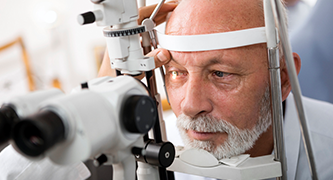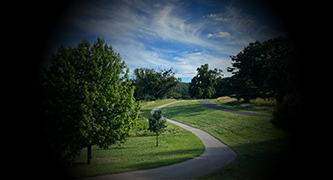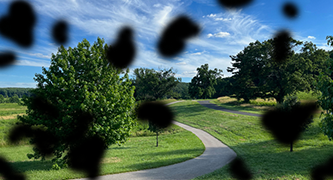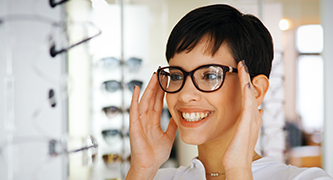The general comprehensive eye exam at Holden Eye Care will typically entail both the testing of your vision in order to be certain that are seeing as clearly as you should and a complete evaluation of the health of your eyes. A comprehensive eye exam will allow us to provide an up to date prescription for eyeglasses and contact lenses
A complete history will be taken regarding your general health, any previous eye problems or conditions that you have experienced and a review of any problems that you might be experiencing with your vision or your eyes. This is important information to provide to the technician or eye doctor during your screening process. If you have any chronic health problems, even if they are currently stable, it is important that you share this information as well. Please be sure to tell the technician or eye doctor about any medications you are taking for these medical conditions, including over the counter medications, supplements, vitamins or eye drops that you may have been using. They are all important. Please bring a current list of medications-even over the counter medications, if you have one. Your family history will be reviewed with you as well. Please tell us about any health problems that run in your family such as diabetes and high blood pressure, as well as any eye problems that your family members may have experienced such as glaucoma, cataracts, or macular degeneration as they can tend to run in families. Your eye examination will begin with a technician measuring your vision, or visual acuity, both with your current eyeglasses or contact lenses, and without any vision correction. Chances are that if you wear eyeglasses or contact lenses, some of the letters on the “Big E” eye chart will be blurry without them. The technician will ask you to read a chart that consists of numbers and letters that get progressively smaller and more difficult to read as you move down the chart. This test, called “Snellen Acuity” or just “Visual Acuity” is an important first step to understanding how well you see. Your exam will proceed with:
Refraction
We will then check your refraction in order to determine the most accurate eyeglass or contact lens prescription necessary to fully correct your vision. This entails having you sit behind an instrument called a Phoroptor, so that the doctor can present a number of lens combinations to see which corrects your vision most precisely. For those patients who wear eyeglasses or contact lenses, you have probably experienced the “which is better” test called refraction. If you require vision correction, the eye doctor will provide you with a copy of your prescription so that you can select the best fitting, comfortable, durable and fashionable frame and the most appropriate type of lenses for your work, hobbies or daily activities.
Eye Movements
Next, the movement of your eyes, or “Ocular Motility” will be evaluated in order to understand how well the eye muscles function together and how effectively they move your eyes into the different positions of gaze.
Pupil Reflexes
By shining a fairly bright light in your eyes, the reaction of your pupils to the light will be evaluated. By shining the light into your eyes in different directions, the doctors can learn a great deal about how well your optic nerve is functioning.
Tonometry Eye Pressure Testing
In order to check for one of the signs of glaucoma, 1-2 eye drops will be placed in your eyes so that the pressure, called Intraocular Pressure (IOP), can be measured while you are behind the Slit Lamp via Goldmann Applanation Tonometry, or with an iCare tonometer, which is a handheld instrument that can measure IOP without the need for drops. This is an important diagnostic test for glaucoma.
Dilated Eye Exam
At this time, additional eye drops may be placed in your eyes in order to dilate or widen your pupils. Pupil dilation is important so that the doctor can examine the health of the structures in the back of your eye including the retina and its blood vessels and the optic nerve. After the dilation drops are placed in your eyes, it will usually take anywhere from 15 to 30 minutes for the eye drops to fully work and dilate your pupil. Please be patient. You will be asked to relax in a waiting areas while the eye drops work, or if you prefer, you may browse our eyewear selection while you wait. The thorough examination of the health of the retina and optic nerve through a dilated pupil is not uncomfortable. The fully widened pupil may make you somewhat sensitive to light and may also blur your vision, especially at near, for up to 6-8 hours after your eye examination, though the duration can vary for everyone. If you have not had a dilated exam in the past, it is a good idea to have a driver with you on your exam day. It is important to bring a good pair of sunglasses with you in order to lessen your light sensitivity.
Slit Lamp Exam
Once your pupils have dilated, you will be asked to sit comfortably behind an instrument called a Slit Lamp Biomicroscope. This instrument provides the eye doctor with both high magnification and special illumination for your doctor to examine the condition of your eyelids, eye lashes, eyelid margins and tear film. The Slit Lamp will also be used to carefully examine the sclera or white of your eye, and the cornea or clear dome-shaped lens, on the outside of your eye. By focusing the slit lamp through the pupil or dark center of the iris, or colored part of the eye, your doctor will be able to examine the health of the crystalline lens, which is where cataracts form. Lastly, the retina and the optic nerve are examined.








